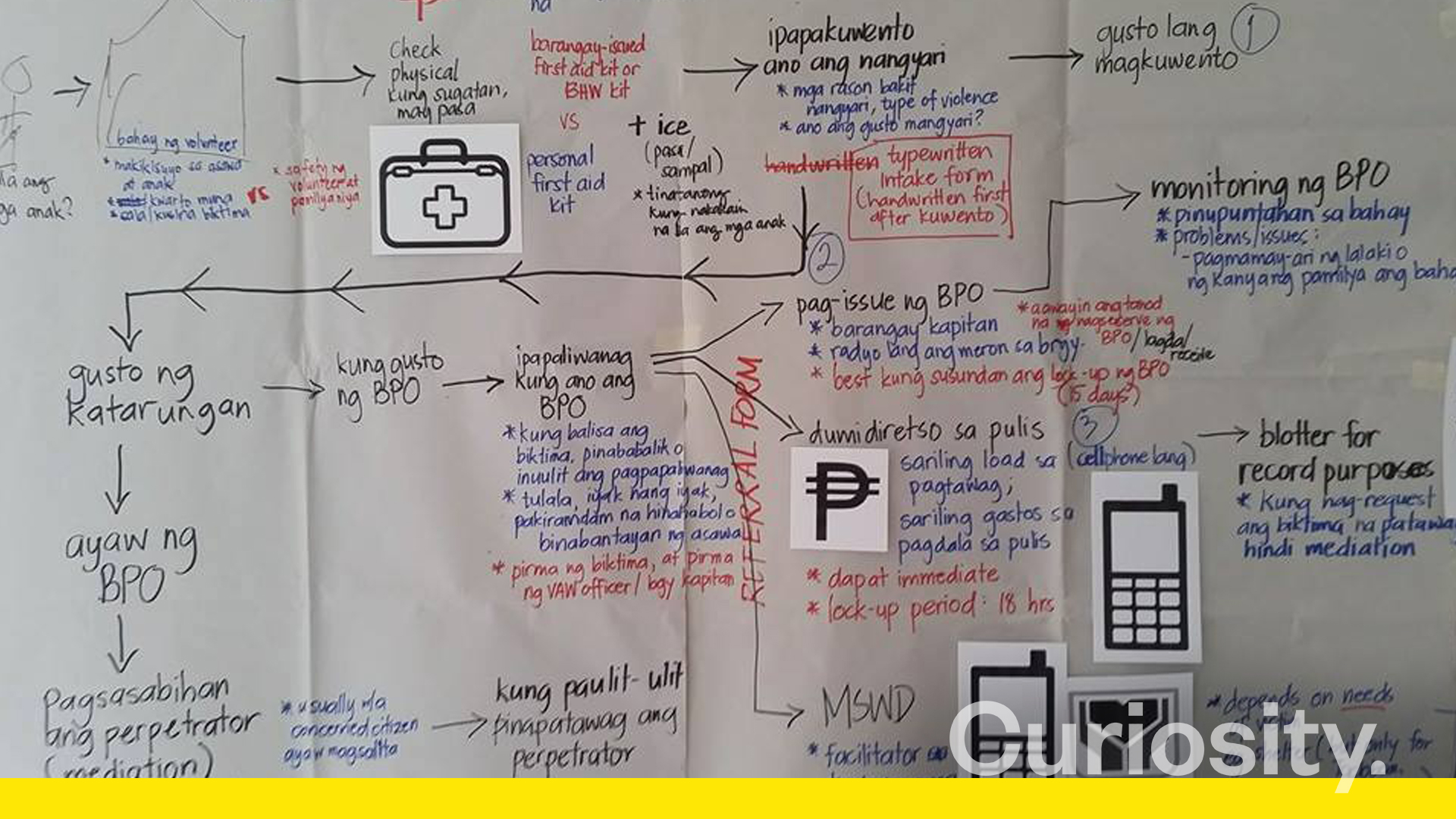
19 Nov Identifying Critical Strategies in Addressing Violence Against Women and Children (VAWC) Amidst Destroyed Infrastructure
Client / Company: Women’s Education, Development and Productivity Research Program (WeDpro)
Industry: Social Services – Human Rights
Objectives and Methodologies
Barangays need to allocate structures for addressing the needs of those affected by Violence Against Women and Children (VAWC), but many of these were destroyed during Typhoon Yolanda. Women’s Education, Development and Productivity Research Program (WeDpro) commissioned Curiosity to conduct extensive quantitative-‐qualitative research to gauge the extent to which women across seven barangays in Eastern Visayas experience, observe, and condone VAWC. An audit (via interviews, barangay visits, and a multi–‐stakeholder workshop) was then conducted to explore the extent to which barangays apply the VAWC Referral Pathway and the status of their VAW Desks. This is critical to identifying much needed skills and resources necessary to addressing VAWC incidences in these areas.

Research Results
Results from the initial qualitative – quantitative research were alarming:
- Physical violence occurred to 1 in 3 respondents, while 1 in 4 experienced sexual violence. Meanwhile, 8 in 10 experienced psychological violence while 4 out of 10 have undergone economic violence.
- While almost all respondents state that they will help a woman they know if she is a VAWC victim, and that perpetrators should answer to the law, many still believe that when VAWC happens it is still the woman’s fault (45%).
- Of all respondents surveyed. 55% stated that VAWC frequently occurs in their communities.
- Notably, while 49% of the respondents stated that they could approach the barangay for VAWC incidences, 62% also did not know whether or not a VAWC desk exists in their barangay.

The VAWC Referral Pathway
Enhancing the VAW Desk Referral Pathway includes capacity building to address vulnerability; investment in communication materials for victims, concerned citizens, and communities at large about VAWC, as well as prescribed measures to address its ubiquity; revisiting the Gender and Development (GAD) budget so that VAW Desk stakeholders will not have to dip into their personal savings to assist victims; including alternative measures to the prescribed pathway when the victims’ perpetrators are related to the very same actors who can prevent VAWC; additional resources for communication and transportation to address lack of coordination across local government units; and lastly, having a centralized reporting system to allocate resources and distribute responsibility more efficiently.

